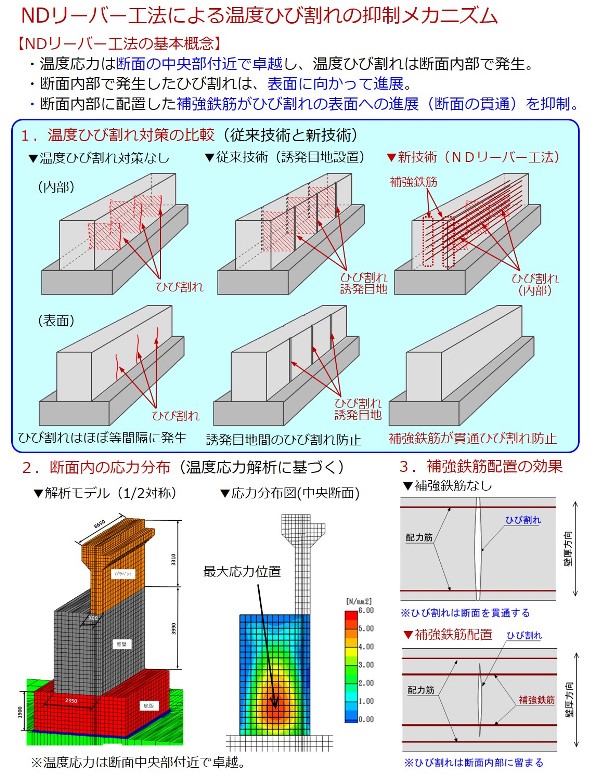2024-05-16 ロイヤルメルボルン工科大学(RMIT)
<関連情報>
- https://www.rmit.edu.au/news/all-news/2024/may/fly-ash-concrete
- https://www.sciencedirect.com/science/article/pii/S0008884624000681
- https://www.sciencedirect.com/science/article/pii/S095006182301718X
- https://www.sciencedirect.com/science/article/abs/pii/S2352710221010263
幅広い置換率のマルチブレンドフライアッシュセメント系の統一水和モデル Unified hydration model for multi-blend fly ash cementitious systems of wide-range replacement rates
Yuguo Yu, Chamila Gunasekara, Yogarajah Elakneswaran, Dilan Robert, David W. Law, Sujeeva Setunge
Cement and Concrete Research Available online:28 March 2024
DOI:https://doi.org/10.1016/j.cemconres.2024.107487

Highlights
- A kinetic hydration model under unified theory for multi-blend binder is developed.
- A numerical framework is proposed to enable coupled kinetic-thermodynamic analysis.
- Hydration analyses on binary, ternary, and quaternary binder systems are performed.
- Model effectiveness is verified for binders with up to 80 % of cement replacement.
- Influence of quaternary blend compositions on hydrating binder system is discussed.
Abstract
Developments of binary, ternary, and even quaternary cementitious binder materials have been widely recognised in research and practices to elevate the sustainability of modern construction industry. To this end, a robust method to predict the hydration of novel binder systems is essential to facilitate informed material designs, yet extremely lacking. In this study, focusing on fly ash cement binders, a unified hydration model, applicable to multi-blend systems that further incorporate hydrated lime and/or nano silica, is freshly established. The proposed method features kinetic models to predict reaction degree for each binder component that are further coupled with a thermodynamic model to evaluate phase assemblage during hydration. The proposed model is carefully calibrated and verified against separate sets of experimental data. It is demonstrated to be applicable to binders incorporating up to 80 % of total cement replacement, and capable of robustly assessing the influence of multi-blend compositions on the hydrating systems.
ナノシリカを配合したHVFAコンクリートの耐硫酸塩性および耐酸性 Sulphate and acid resistance of HVFA concrete incorporating nano silica
Charith Herath, David W. Law, Chamila Gunasekara, Sujeeva Setunge
Construction and Building Materials Available online: 6 June 2023
DOI:https://doi.org/10.1016/j.conbuildmat.2023.132004

Highlights
- Both HVFA-65 and HVFA-80 concretes provided enhanced durability compared to a comparable Portland cement concrete.
- HVFA-65 concrete gave superior performance in sulphate media and HVFA-80 gave superior performance when subject to acid media.
- XRD, TGA and NMR analysis showed evidence of gypsum formation and reduction of Calcium Hydroxide content with time.
- A lower Calcium Hydroxide content in HVFA-80 compared to HVFA-65 accounts for the enhanced sulfuric acid resistance in HVFA-80 concrete.
Abstract
High Volume Fly Ash (HVFA) concrete has been shown to be a viable alternative construction material to Portland cement concrete to improve sustainability and durability. In addition, nano silica been found to be a significant contributor towards increasing the early age strength and the durability properties of HVFA concrete. This study reports an investigating of the resistance of HVFA concrete with 65% and 80% replacement of cement, with nano silica and hydrated lime, exposed to acid and sulphate solutions over a 2-year period. The change in physical appearance, mass and length was monitored, together with detailed mechanical, chemical and microscopy analysis at 12 and 24 months. The results indicate that the HVFA concrete mixes provided enhanced resistance compared to Portland cement concrete. The HVFA 80% cement replacement performed better in acid media while, the HVFA concrete mix with 65% cement replacement was superior in sulphate media.
ナノエンジニアリングによる高容量フライアッシュコンクリートの長期機械性能 Long term mechanical performance of nano-engineered high volume fly ash concrete
Charith Herath, Chamila Gunasekara, David W. Law, Sujeeva Setunge
Journal of Building Engineering Available online:23 August 2021
DOI:https://doi.org/10.1016/j.jobe.2021.103168
Highlights
- HVFA-65 and HVFA-80 concretes achieved 73 MPa of compressive strength at 450 days.
- HVFA concrete produces strongly compacted ITZ that illustrates to higher tensile strength.
- AS & ACI standards significantly underestimate the flexural strength of HVFA concrete.
- Splitting tensile strength & elastic modulus of HVFA concrete follow AS & ACI standards.
- Lime provides added CH for pozzolanic reaction of nano silica modified HVFA composite.
Abstract
High Volume Fly Ash (HVFA) concrete is a sustainable construction material which can act as a viable alternative to Portland cement (PC) concrete. This study investigates the long-term mechanical performance of two unique HVFA concrete mixes, 65% and 80% cement replacements, incorporating hydrated lime, up to 18%, and 3% nano silica. HVFA-65 concrete achieved compressive strength values increasing from 32 to 73 MPa, from 7 to 450 day while HVFA-80 displayed a strength increase from 22 to 71 MPa in the same period. The flexural strength of HVFA-65 concrete increased from 3.6 to 8.7 MPa while the splitting tensile strength and elastic modulus gave values of 2.7–5.8 MPa and 30.3–40.5 GPa, respectively. Meanwhile, HVFA-80 concrete achieved flexural strengths of 2.7–8.7 MPa, splitting tensile strengths of 1.6–5.0 MPa and an elastic modulus of 28.9–37.0 GPa. Analysis of paste samples identified the presence of 11%, 3.2%, 5.3% and 2.1% higher concentrations of Portlandite within the HVFA-65 system at 7, 28, 90 and 450 days respectively, indicating a high availability of portlandite for the pozzolanic reaction of the fly ash. In microstructural investigation, HVFA-65 concrete displayed a denser gel matrix and stronger bond within the interfacial transition zone (ITZ) boundary compared to HVFA-80 at all ages. In addition, a statistical regression analysis conducted to predict relationships between long term mechanical properties of HVFA concrete are compared with existing design equations available in Australian Standards and ACI codes.



